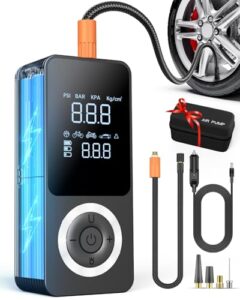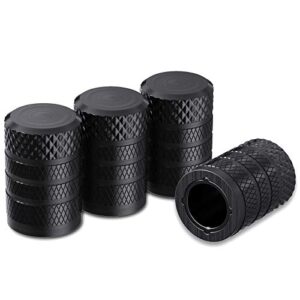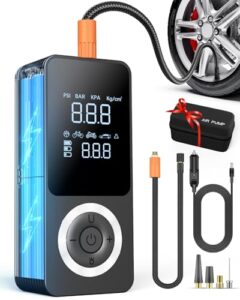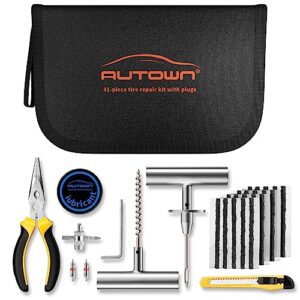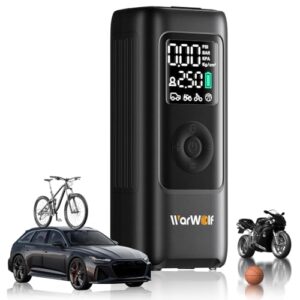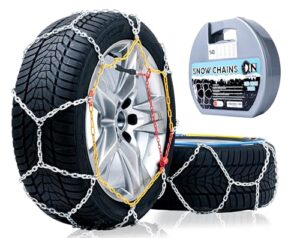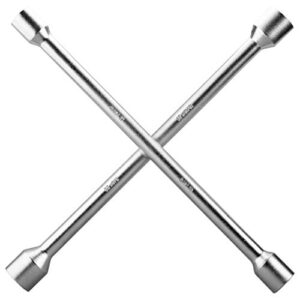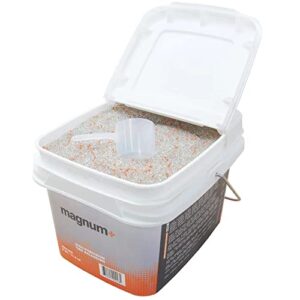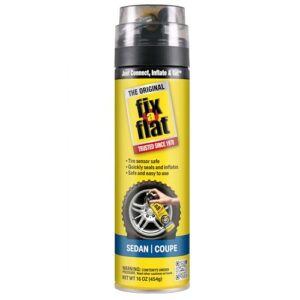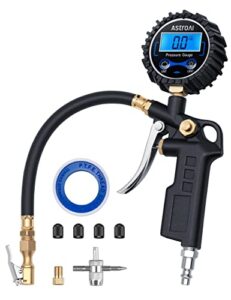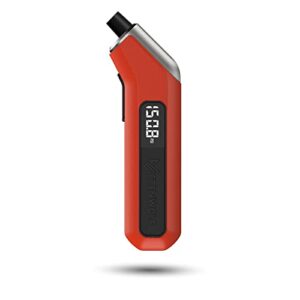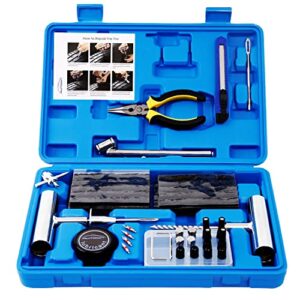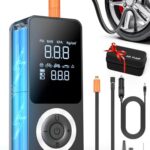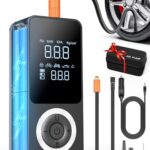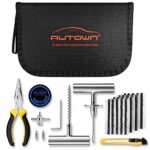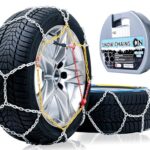The correct tire pressure is crucial for car safety and performance. So, how do you find it?
It’s easier than you think. Maintaining the right tire pressure improves gas mileage, ensures even tire wear, and increases handling. Incorrect pressure can lead to poor braking and increased risk of blowouts. But many drivers are unsure of the correct pressure for their tires.
This can vary based on the car model and tire type. Understanding where to look and how to check can make a big difference. In this post, we’ll guide you through finding the right tire pressure for your car. Follow our simple steps to keep your car running smoothly and safely. Stay tuned to learn more!
Importance Of Proper Tire Pressure
Maintaining the correct tire pressure is crucial for your car’s performance and safety. It affects everything from how your car handles to how much fuel it uses. Incorrect tire pressure can lead to a host of issues.
Safety Benefits
Proper tire pressure ensures your car grips the road well. This improves handling and braking. Tires with the right pressure wear evenly, reducing the risk of blowouts. Under-inflated tires can overheat and fail. Over-inflated tires can cause poor traction.
Fuel Efficiency
Correct tire pressure helps your car use fuel more efficiently. Under-inflated tires increase rolling resistance, making the engine work harder. This leads to higher fuel consumption. Over-inflated tires can also decrease fuel efficiency. Keeping tires at the proper pressure saves you money on gas.
Locating Tire Pressure Information
Knowing the correct tire pressure for your car is crucial for safety and performance. To find this information, you can check various sources. Let’s look at the two most reliable ways to locate this information.
Owner’s Manual
Your car’s owner’s manual is the go-to source for tire pressure information. It contains all the details you need. Typically, you will find a section dedicated to tires, which includes:
- Recommended tire pressure for front and rear tires
- Pressure levels for different driving conditions
- Information on tire maintenance
Make sure to keep the manual in your car for easy access. If you have lost it, you can often download a digital copy from the manufacturer’s website.
Tire Placard
The tire placard is another excellent source for tire pressure information. This is a small label found inside your car. It is usually located:
- On the driver’s side door jamb
- Inside the glove box
- Under the fuel cap
This placard provides the recommended tire pressures for both front and rear tires. It may also include the correct pressure for your spare tire. Always refer to this placard before inflating your tires.
By using these two sources, you can ensure your tires are always at the proper pressure. This helps in maintaining safety and performance on the road.

Using A Tire Pressure Gauge
Maintaining the correct tire pressure is crucial for your car’s performance and safety. One of the best ways to check tire pressure is by using a tire pressure gauge. This tool helps ensure your tires are inflated to the recommended levels. Below, we discuss the different types of gauges and how to use them effectively.
Types Of Gauges
There are three main types of tire pressure gauges:
- Stick Gauges: These are simple and compact. They look like a pen and are easy to use.
- Dial Gauges: These have a round face like a clock. They offer more accuracy and are easy to read.
- Digital Gauges: These provide a digital readout. They are the most accurate and often come with backlit displays for easy reading.
How To Use
- First, check the recommended tire pressure. This information is found in the car manual or on a sticker inside the driver’s door.
- Remove the valve cap from the tire.
- Place the tire pressure gauge on the valve stem. Press down firmly to get a reading.
- Read the pressure level displayed on the gauge. Compare it to the recommended pressure.
- If the pressure is too low, add air. If it’s too high, release air until it matches the recommended level.
- Replace the valve cap and repeat for all tires.
Using a tire pressure gauge helps maintain proper tire inflation. This ensures better fuel efficiency, longer tire life, and improved safety. Make it a habit to check your tire pressure regularly.

When To Check Tire Pressure
Ensuring your car’s tires have the correct pressure is vital for safety and performance. But, do you know when to check tire pressure? Let’s explore the best times.
Regular Intervals
Checking tire pressure at regular intervals is essential. You should do it at least once a month. Tires can lose air over time, even if there is no puncture. Regular checks keep your tires in top shape.
| Interval | Reason |
|---|---|
| Monthly | Natural air loss |
| Seasonally | Temperature changes |
Before Long Trips
Always check tire pressure before long trips. Long drives put extra stress on your tires. Proper tire pressure ensures a smooth and safe journey.
- Check all four tires.
- Don’t forget the spare tire.
- Use a reliable gauge.
Keeping your tires well-inflated saves fuel. It also reduces the risk of tire blowouts.
Factors Affecting Tire Pressure
Understanding the factors affecting tire pressure is vital for car maintenance. Correct tire pressure ensures safety and extends tire life. Several factors can influence tire pressure, including temperature changes and load carrying.
Temperature Changes
Temperature changes can affect tire pressure significantly. Cold weather can cause tire pressure to drop. Warm weather can make tire pressure rise. It is essential to check tire pressure regularly, especially during weather changes. This helps maintain the correct pressure, ensuring safe driving conditions.
Load Carrying
Load carrying also impacts tire pressure. Carrying heavy loads can increase tire pressure. This can lead to uneven tire wear. Always check the recommended tire pressure when your car is fully loaded. This helps maintain even tire wear and improves fuel efficiency.
Common Tire Pressure Mistakes
Correct tire pressure is crucial for your car’s performance and safety. Many drivers make common mistakes that can lead to tire damage or accidents. This section will highlight these mistakes, focusing on overinflation and underinflation.
Overinflation
Overinflation happens when tires have too much air. This causes the center of the tire to wear out faster. It also reduces the tire’s contact with the road, which can affect your car’s handling and braking. Below is a table that illustrates the effects of overinflation:
| Effect | Impact |
|---|---|
| Uneven tire wear | Reduces tire life |
| Decreased traction | Poor handling and braking |
| Increased risk of blowouts | Potential accidents |
Underinflation
Underinflation means the tires don’t have enough air. This causes the tire to wear out on the edges. It also increases rolling resistance, which reduces fuel efficiency and can overheat the tires. Below are some key impacts of underinflation:
- Increased tire wear: Tires wear out faster on the edges.
- Reduced fuel efficiency: More fuel is needed to move the car.
- Higher risk of tire failure: Overheating can cause blowouts.
Avoid these common mistakes to keep your tires in good condition. Regularly check your tire pressure to ensure safety and performance.
Maintaining Optimal Tire Pressure
Maintaining the correct tire pressure is crucial for your car’s performance and safety. Correct tire pressure ensures a smooth ride, better fuel efficiency, and longer tire life. Tires with improper pressure can lead to uneven wear, poor handling, and even accidents. Here are some key steps to keep your tires in top condition.
Routine Checks
Regularly checking your tire pressure can prevent many issues. Use a reliable tire gauge to check the pressure at least once a month. Always check the pressure when the tires are cold. This gives a more accurate reading.
Refer to your vehicle’s owner manual or the sticker inside the driver’s door for the recommended pressure. This information is usually listed in pounds per square inch (PSI).
- Check pressure every month
- Use a reliable tire gauge
- Check when tires are cold
- Refer to the manual for PSI
Professional Assistance
Sometimes, it is best to seek professional help. A mechanic can inspect your tires for wear and tear. They can also check for any damage that may not be visible to you.
During your regular car service, ask the mechanic to check the tire pressure. They have the tools and expertise to ensure your tires are in optimal condition.
- Visit a mechanic for inspections
- Ask to check tire pressure during service
- Benefit from their expertise
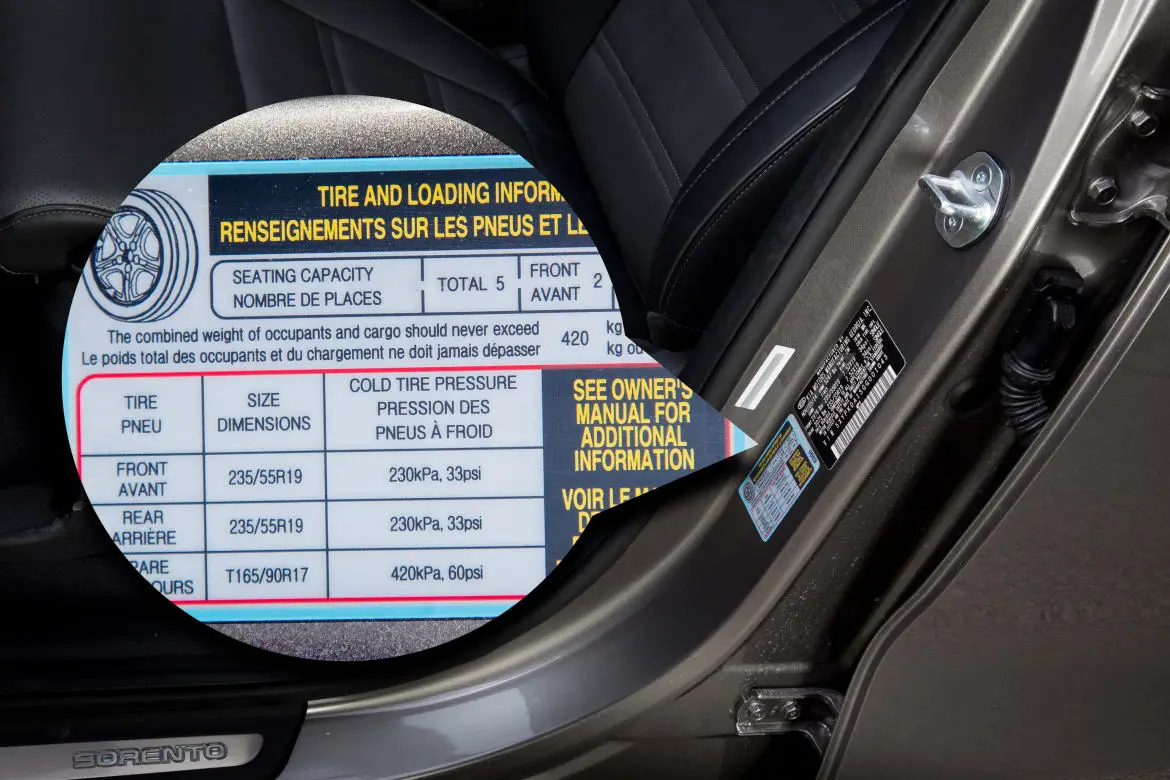
Frequently Asked Questions
What Is The Recommended Tire Pressure For My Car?
Check your car’s manual or the tire placard. It is usually found on the driver’s side door frame.
How Often Should I Check My Tire Pressure?
Check tire pressure once a month. It’s important for safety and fuel efficiency.
Can Tire Pressure Affect My Car’s Performance?
Yes, low or high tire pressure can affect handling, braking, and fuel economy. Always maintain proper tire pressure.
What Are The Signs Of Incorrect Tire Pressure?
Look for uneven tire wear, poor handling, or the tire pressure warning light on your dashboard.
Conclusion
Finding the correct tire pressure is crucial for safety. Check your car manual. The information is on the driver’s door frame too. Use a reliable gauge to measure pressure. Do this monthly and before long trips. Proper tire pressure improves fuel efficiency.
It also extends tire life. Avoid overinflation or underinflation. Both can cause problems. Keep an eye on your tires. Safe travels depend on it.




